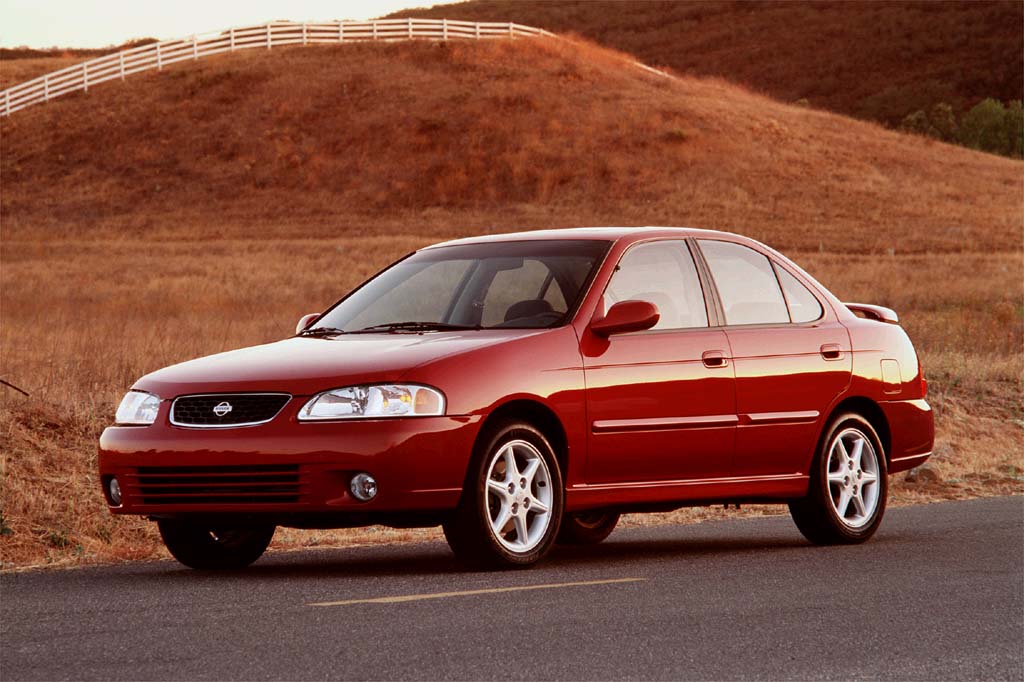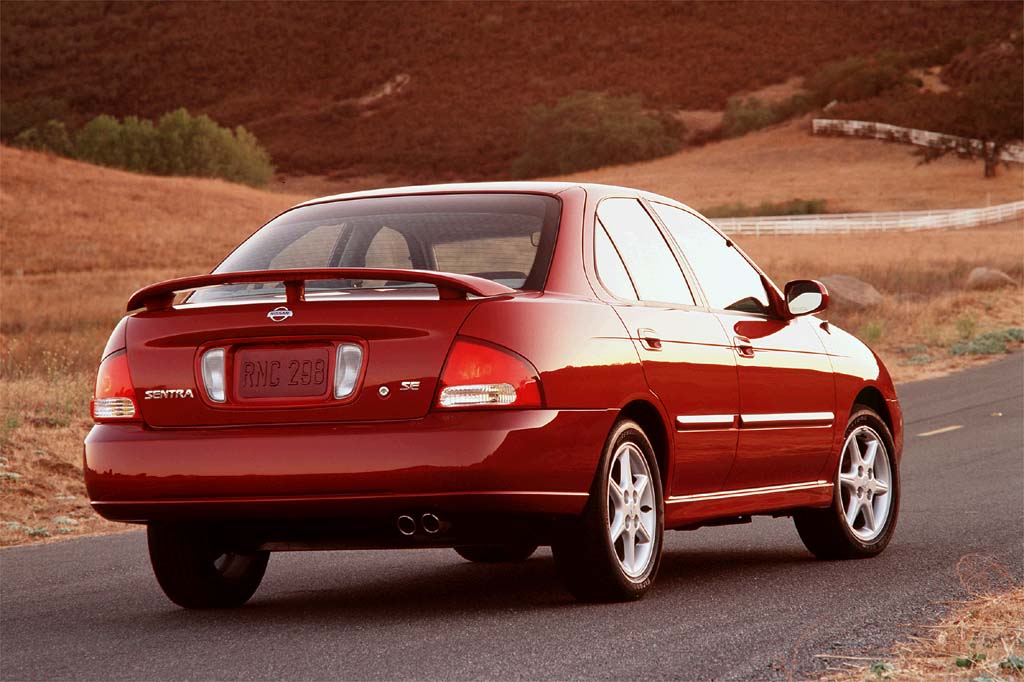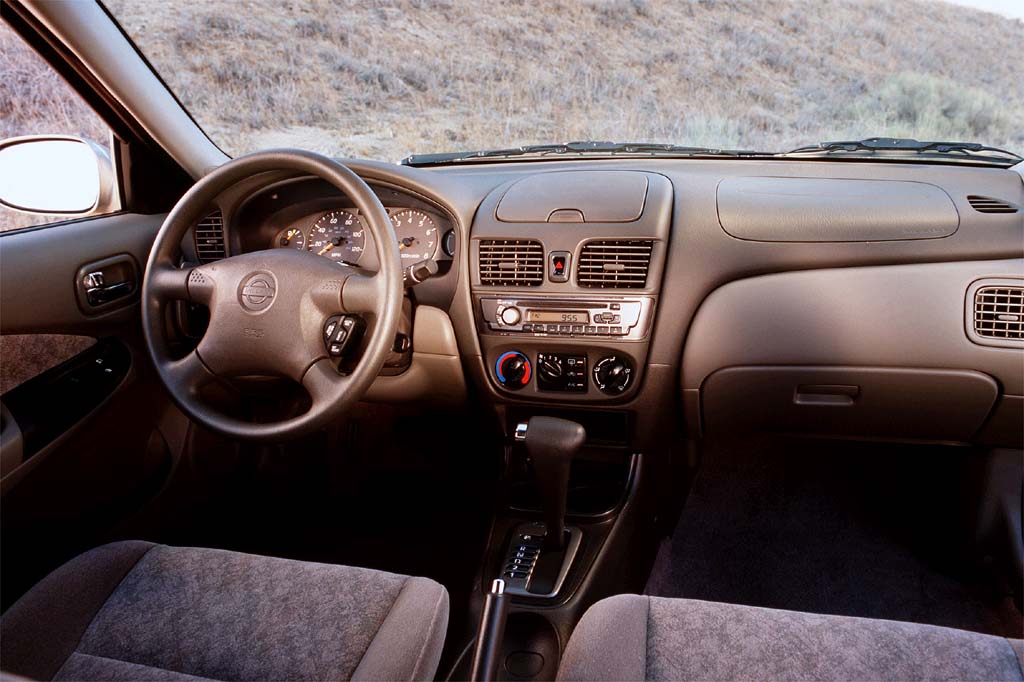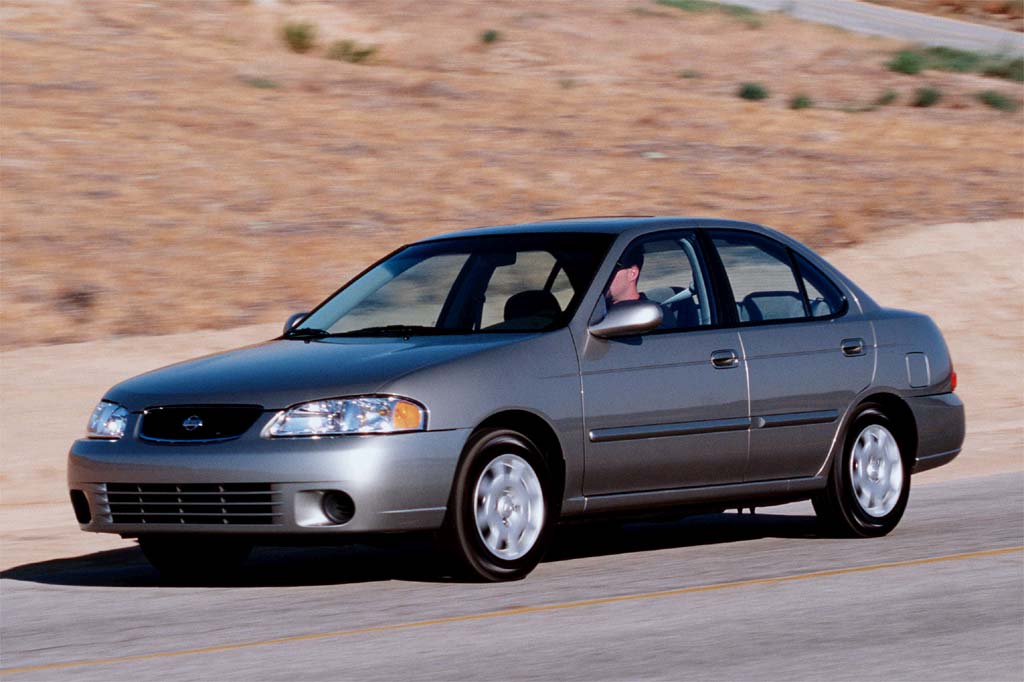| Compact car; Built in Mexico |
|
|
| Good condition price range: $2,200 – $7,200* |

2000 Nissan Sentra SE

2000 Nissan Sentra SE

2000 Nissan Sentra interior

2001 Nissan Sentra GXE

2001 Nissan Sentra SE
| Pros: |
|
| Cons: |
|
Not as refined as a Civic or as roomy as a Ford Focus, Nissan’s “entry-level” sedan is solid enough–and priced right on the secondhand market.
Overview
Nissan redesigned its smallest sedan for 2000, with bigger dimensions for its fifth generation. Introduced after the 2000 model year began, the “entry-level” 4-door was the first version to be designed exclusively for the U.S. market. XE and uplevel GXE versions used a 1.8-liter 4-cylinder engine that made 126 horsepower. The sportier SE got a 145-horsepower 2.0-liter four. A 5-speed manual transmission was standard with either engine, but a 4-speed automatic was optional. A special Sentra CA, sold in California, met that state’s Super Ultra Low Emission Vehicle requirements. Antilock brakes and front side airbags were optional, as a package for the GXE and SE only. The SE sedan had standard 4-wheel disc brakes and was the only Sentra available with a sunroof. XE and GXE models rode on 14-inch steel wheels, while the SE got standard 15-inch alloy wheels. An in-dash CD changer was optional only for GXE and SE sedans.
Yearly Updates
| 2001 Sentra Except for the addition of an in-trunk emergency release, little was new for 2001. The base XE edition lost its driver’s-seat height adjuster. |
| 2002 Sentra Gone was the 145-hp SE model, replaced at the top of the line by the SE-R and SE-R Spec V. These new models had a larger engine with 165 hp in the SE-R and 175 in the Spec V. The SE-R had unique interior trim, a sport suspension, and 16-inch wheels vs. other Sentras’ 14s or 15s. The SE-R Spec V got further suspension revisions, 17-inch wheels, distinct exterior styling touches, and its own interior decor, including sport front seats. |
| 2003 Sentra The Limited Edition, basically a GXE with a 165-hp 2.5-liter engine, plus standard automatic transmission, ABS, and front side airbags was added to the lineup for ’03. |
| 2004 Sentra The Sentra got minor front and rear exterior changes in 2004. |
| 2005 Sentra Availability of satellite radio is among the few changes to Nissan’s smallest sedan for 2005. All models get new upholstery fabrics for 2005, and the 1.8 S adds cruise control and a trip computer as standard. |
| 2006 Sentra No 2006 changes for Sentra. |
